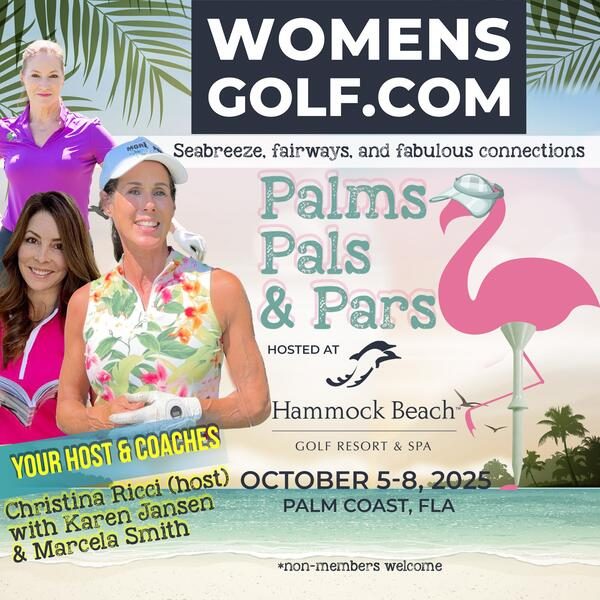Having been a registered nurse for over twenty years, I’ve seen and treated a lot of injuries; some of which originated on the golf course. The most common injuries and illnesses that occur during peak season include sunburn, dehydration, heat stroke, Rhus dermatitis, and insect stings or bites.
By carrying a basic First-Aid kit in your golf bag you will be prepared to handle and administer basic first aid. As my dad always said, “It’s better to have it and not need it than to need it and not have it.”
Disclaimer: I am not a medical doctor and the information in this article should not be construed as medical advice.
Golf in Hot Weather
Sunburns are very common and easily preventable. The sun’s rays are strongest between 10 am and 2 pm, but you can still be exposed to damaging sun rays in the early morning the late afternoon. The American Academy of Dermatology recommends that you use a broad-spectrum (meaning it blocks both UVA and UVB rays), water-resistant sunscreen that has a minimum Sun Protection Factor (SPF) of 30. Make sure that you cover all exposed areas of skin, including those ears that peek out under your hat, and reapply every two hours. The FDA requires that a bottle of sunscreen retain its strength for at least three years, so if you have a couple of bottles left over from last summer, you should be good to go. If you start to burn during play, apply a burn cream with aloe Vera for temporary pain relief and to help protect your skin from harmful bacteria.
Dehydration and Heat Stroke. Your skin is the largest organ of your body and its natural cooling defense is sweating. Your body needs fluid to stay hydrated and to function at top performance. To prevent heat-related illness during activity, the United States Department of Labor Occupational Safety and Health Administration (OSHA) recommends that you drink water every 15 minutes, even when you are not thirsty. A good indicator that you are staying hydrated is the color of your urine: the lighter the urine, the more hydrated you are. Common signs of dehydration and impending heat stroke include dark colored urine (or not urinating at all), swollen tongue, weakness, confusion, and a lack of sweating. The American Heart Association recommends that you weigh yourself post-play and drink 16 ounces of water (2 cups) for every pound lost during activity. If the course allows, carry a water bottle with you during play and fill it up at water stations so you stay hydrated. If you are sweating a lot, drink 16 ounces (2 cups) of a sports drink instead of water to replenish lost electrolytes.
Stings and Bites
Rhus Dermatitis (plant induced inflammation of the skin). If you play golf at all, you have tromped through the rough, into high grass, and possibly been next to trees. This is where poison oak, poison ivy, and sumac can be found. If you come into contact, the oil from the leaves will cling to your clothes and skin then transfer to anything you touch, spreading the oil and consequently the inflammation to other parts of your body. Most cases are fairly mild and can be treated with a topical hydrocortisone cream or oral antihistamines. If you come into contact with these plants, remove the oils by washing with soap and water as soon as you can.
Insect Sting or Bite. Standing water in warm weather is the perfect breeding ground for mosquitos. Although bothersome, these types of bites are usually not serious. Bee stings, however, can be life threatening. If you know you are allergic, make sure that you carry an EpiPen (or another epinephrine auto-injector), and a cell phone (to call 9-1-1) with you at all times during play. Bees tend to build their nests in tree cavities and under edges of objects. Assuming you get stung and are NOT allergic, remove the stinger by scraping across the skin with a hard edge (like a credit card). Pinching around the area will increase the risk of venom release into the surrounding tissue, so avoid this common extraction method. Once the stinger is removed, ice the area, and elevate it. Ticks are another concern. If you find a tick attached to your skin, clean the area around the tick with an alcohol wipe. Use tweezers to pinch the head of the tick as close to the skin as possible and pull back gently and smoothly. Clean the area again with an alcohol wipe and watch for redness over the next 10 days. If redness appears around the area of the tick bite, seek medical attention.
Your Golf First Aid Kit
You can purchase a small First Aid kit online or at your local store, but you can build your own much cheaper. Here is a list of the basic elements I recommend for a Golfing First-Aid Kit:
- A small bag or plastic container to hold all the supplies.
- Diamond-head forceps or tweezers
- Benadryl
- Tylenol, Ibuprofen, and Aspirin
- Burn cream
- 1% Hydrocortisone cream
- Neomycin and/or Bacitracin ointment
- Insect Sting Relief Pads (Ethyl Alcohol 50% to clean and Lidocaine HCl 2% to numb)
- Alcohol wipes
- Ice pack
- Non-latex Band-Aids
- Sports drink mix
- Water bottle
- Sunscreen (SPF 30 or higher)
Thinking ahead and being prepared will help ensure that your golf outing is not only fun and relaxing, but safe as well. Include the above items in your First Aid Kit and you will be prepared for the most common injuries that happen on the course.
References:
- “Sunscreen FAQs.” American Academy of Dermatology. N.p., 5 Aug. 2016. Web. 03 June 2017.
- “Staying Hydrated, Staying Healthy.” American Heart Association. N.D., n.d. 03 June 2017.
- “Water. Rest. Shade.” United States Department of Labor Occupational Safety and Health Administration. N.D., n.d. 03 June 2017.







